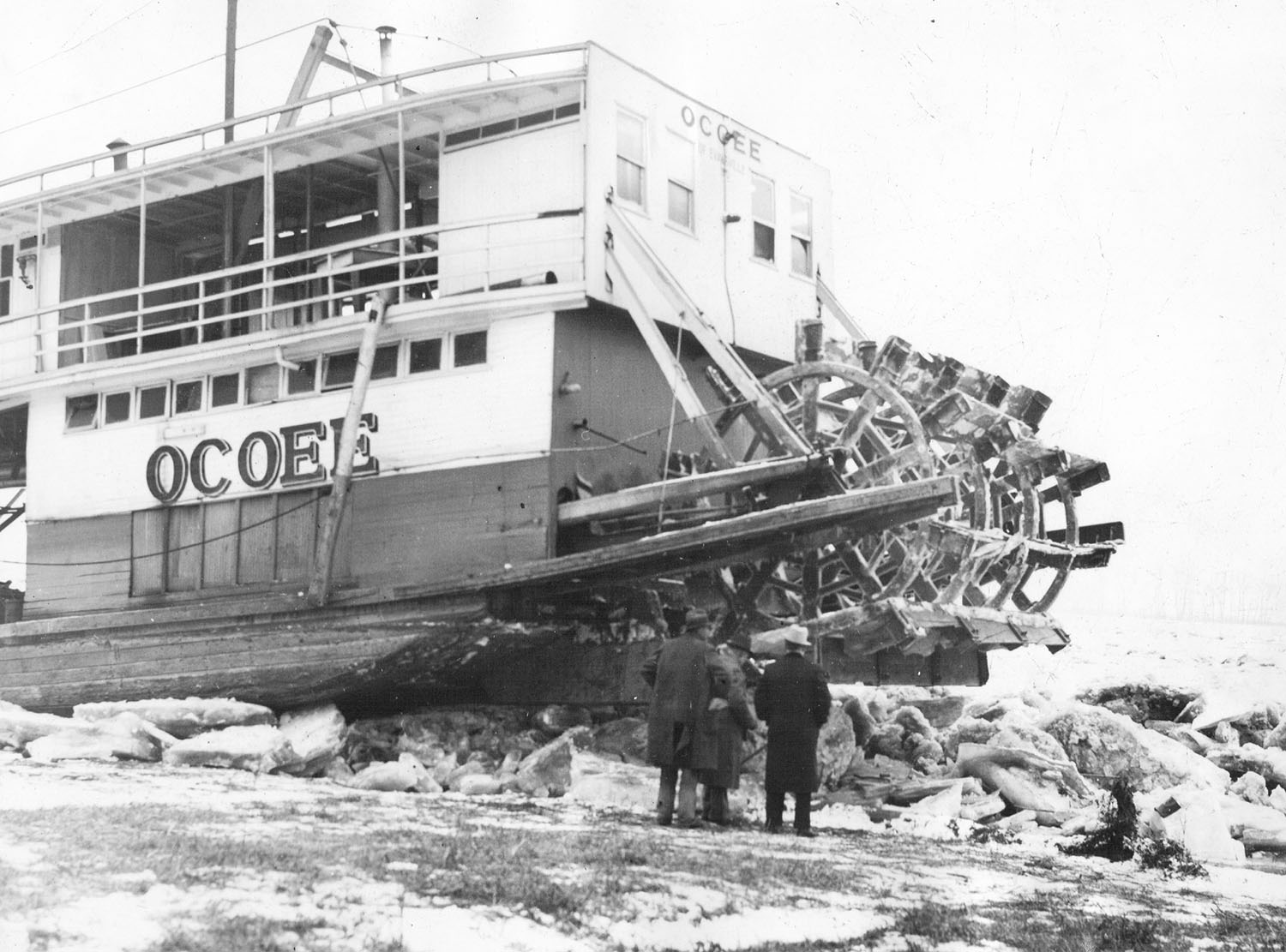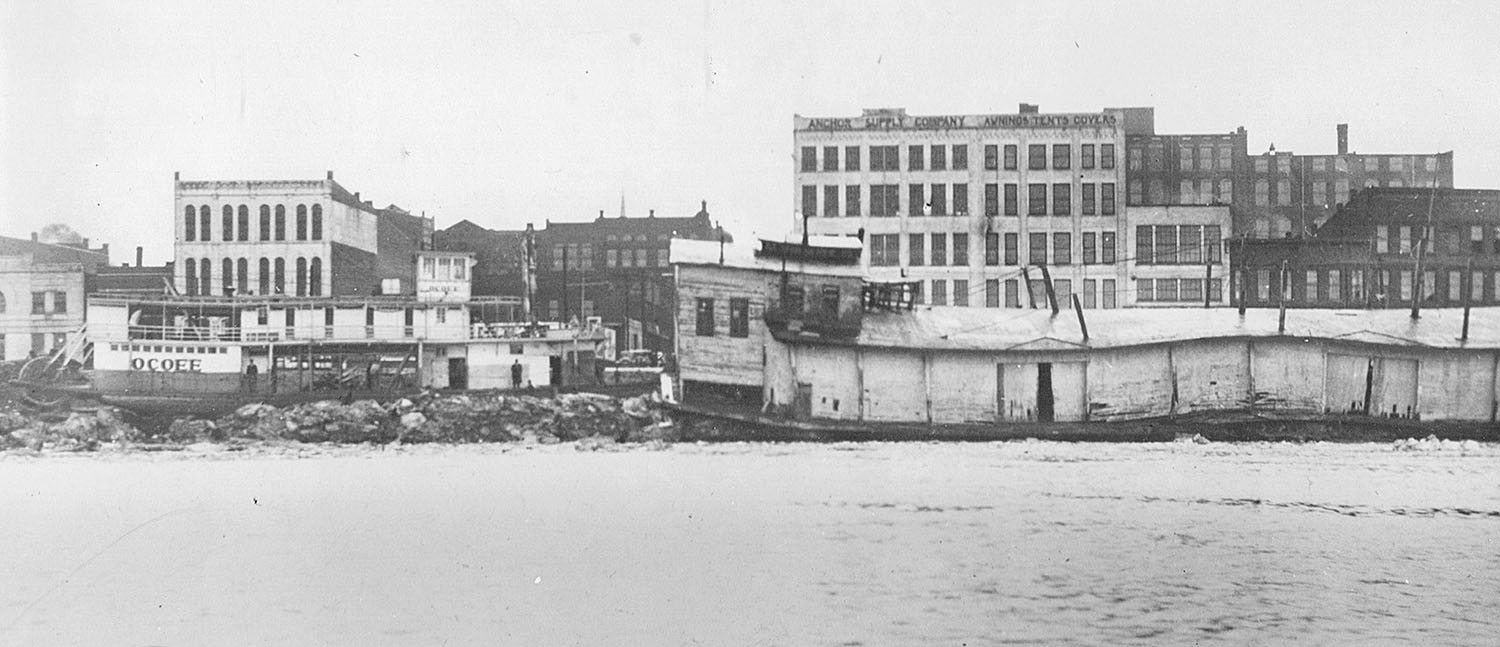After years of a relative respite from severe winters, it appears that icy times have returned. Unlike the Upper Mississippi River where, owing to ice harbors, coves and other safe places, mariners in cold climates take icy conditions in stride, the Ohio River has never been well equipped to handle it; especially in steamboat days.
According to record, one of the worst ice blockages on the Ohio occurred in the 1850s, when the river completely froze and remained closed to traffic for 57 days.
As most river historians agree, the most damaging ice situation of all time, on both the Mississippi and Ohio, happened during the winter of 1918. With most of the steamboats still being wooden-hulled, the razor-sharp ice virtually sawed hulls off at the waterlines. As the ice piled up on main decks, it either sank the boat from the excessive weight or crushed the upper works.
At Memphis, the packets DeSoto and Georgia Lee both succumbed to ice. The mouth of the Tennessee River at Paducah, Ky., was known as the Duck’s Nest and, inasmuch as it seldom froze over, was a place for riverboats to seek refuge. During this catastrophic winter, it, too, froze and took six large steamboats (most of them owned by the Eagle Packet Company of St. Louis) to their doom. At Cincinnati, the beautiful big sidewheelers City of Louisville and City of Cincinnati were both crushed like eggshells. The small packet Helen E broke loose on the Kanawha River and floated, unscathed, all the way down the Ohio to Madison, Ind. A total of 36 vessels were sunk or destroyed.
This week, the Old Boat Column images present the towboat Ocoee, an unfortunate victim of the 1936 ice gorge that extended from Owensboro to Uniontown, Ky.
The Ocoee was built in 1914 at Muscle Shoals, Ala., for the U.S. Army Corps of Engineers. The sternwheeler, which had a wooden hull measuring 100 feet in length by 22 feet in width, was sold in the 1930s to Capt. Tom Williams of Evansville, Ind. By the autumn of 1935, Earl Cooper of Parkersburg, W.Va., chartered the towboat and used it for moving oil and gas barges from North Bend, Ohio, to Evansville and Bowling Green for the Gulf Refining Company.
Capt. Wymond Brasher was master of the Ocoee. He was an uncle to Capt. Charles Brasher (1909–1975), who served on boats of Greene Line Steamers and, beginning in 1967, was master and director of operations for the excursion steamer Belle of Louisville. Fifty years ago in 1971, he gave this writer his first job aboard the Belle.

The Ocoee was sunk in the gorge at Evansville in February 1936 and shoved high up the bank. The riverboat was raised and sold to Capt. Tom Hines, who changed the name to Nolin and operated it on the Green River, towing for the Diamond Rock Asphalt Company. The Nolin often worked in conjunction with the towboats Hibernia and Queen of Dycusburg.
After a change in ownership to Hershel Moore, the towboat was dismantled in 1940.
Caption for top photo: The steam towboat Ocoee and wharfboat after the 1936 ice gorge at Evansville, Ind. (Keith Norrington collection)
Editor’s note: For questions or suggestions regarding the Old Boat Column, Keith Norrington may be contacted by e-mail at curatorkeith@yahoo.com.




